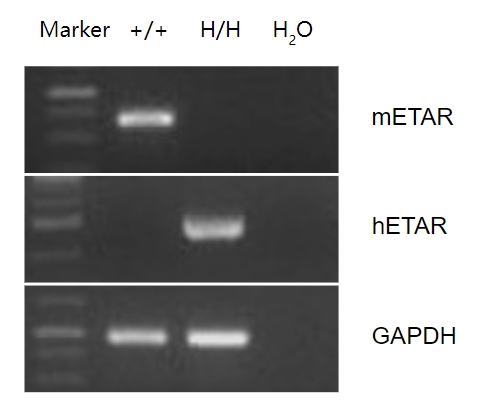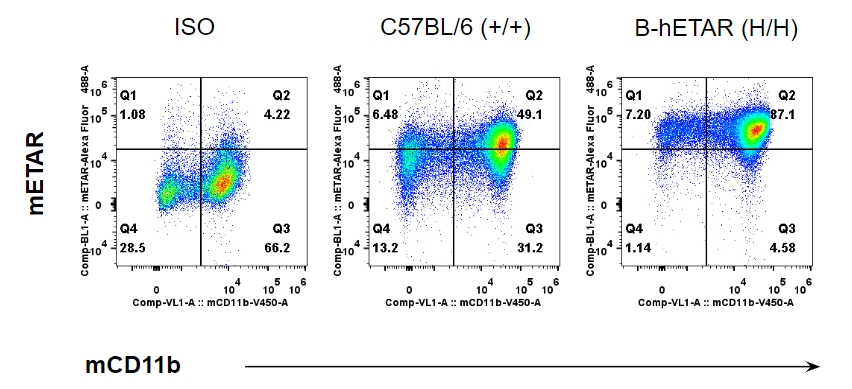Basic Information
-
Targeting strategy

-
Gene targeting strategy for B-hETAR mice. The human ETAR CDS was insert into mouse Etar exon 2 in B-hETAR mice.
-
mRNA expression analysis

-

Strain specific analysis of ETAR gene expression in B-hETAR mice by RT-PCR. Mouse Etar mRNA was detectable in lung of wild-type (+/+) mice. Human ETAR mRNA was detectable only in homozygous B-hETAR mice (H/H) but not in wild-type mice.
-
Protein expression analysis

-

Strain specific ETAR expression analysis in homozygous B-hETAR mice by flow cytometry. Monocytes and macrophages of bone marrow were collected from wild-type C57BL/6 mice (+/+) and homozygous B-hETAR mice (H/H), and analyzed by flow cytometry with species-specific anti-ETAR antibody. Mouse Etar was detectable in wild-type mice. This anti-mouse ETAR antibody also cross reacts with human ETAR. Taken together with RT results, B-hETAR mice successfully express human ETAR protein.


